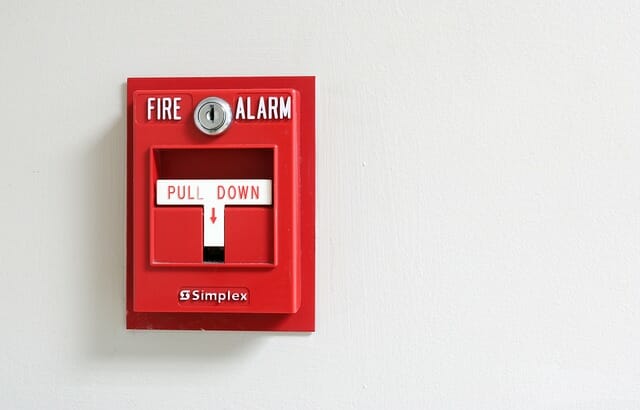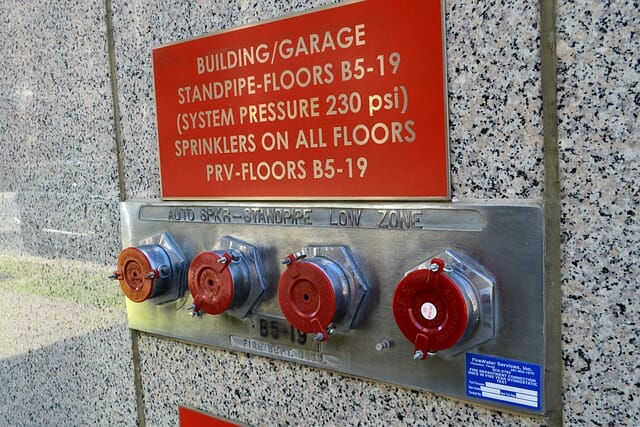Comprehensive Fire Safety Equipment List: Protecting Employees and Property
Fire safety equipment plays a vital role in safeguarding lives and protecting property in the event of a fire. A comprehensive array of fire safety equipment ensures early detection, effective suppression, and efficient evacuation. This article provides a detailed list of essential fire safety equipment for workplaces. By equipping your workplace with the right tools, you can enhance fire safety measures and minimize potential risks.
Fire Alarms and Smoke Detectors
Fire alarms and smoke detectors are crucial fire safety equipment for early fire detection, enabling timely evacuation and response. Install a combination of smoke detectors and fire alarms throughout your workplace. Different types of smoke detectors include photoelectric detectors, which are effective at detecting smoldering fires, and ionization detectors, which are suitable for detecting fast-flaming fires.
Consider heat detectors for areas with high dust or steam levels. Ensure that the fire alarms are interconnected to provide simultaneous alerts throughout the building.
Fire Extinguishers
Fire extinguishers are essential fire safety equipment or initial fire suppression, especially for small fires. Place fire extinguishers in easily accessible locations throughout the workplace. The type of fire extinguisher required depends on the class of fire it can effectively suppress:
Class A extinguishers: Used for ordinary combustible materials like wood, paper, and cloth.
Class B extinguishers: Suitable for flammable liquids such as gasoline, oil, and solvents.
Class C extinguishers: Designed for fires involving electrical equipment and appliances.
Class D extinguishers: Specifically designed for fires involving combustible metals.
Class K extinguishers: Used for fires involving cooking oils and fats in commercial kitchens.
Ensure that employees receive proper training in the selection, use, and maintenance of fire extinguishers.

Sprinkler Systems
Sprinkler Systems
Sprinkler systems are highly effective fire safety equipment in suppressing fires and preventing their spread. There are different types of sprinkler systems available:
Wet pipe sprinkler systems: These systems contain water in the pipes, which is released when the sprinkler heads detects heat.
Dry pipe sprinkler systems: Ideal for areas exposed to freezing temperatures, as they use compressed air or nitrogen instead of water until heat triggers the sprinkler heads.
Pre-action sprinkler systems: Combines elements of both wet and dry pipe systems, requiring an activation event such as a smoke detector or heat detector before water is released.
Deluge sprinkler systems: These systems provide a continuous flow of water through open sprinkler heads, suitable for high hazard areas.
Consult with fire safety professionals to determine the most appropriate sprinkler system for fire safety equipment in your workplace.

Fire Suppression Systems
Fire Suppression Systems
In addition to sprinkler systems, specialized fire suppression systems are designed for specific fire hazards. Some commonly used fire suppression safety equipment systems include:
Kitchen hood fire suppression systems: Installed in commercial kitchens, these systems quickly suppress fires originating from cooking appliances.
Carbon dioxide (CO2) fire suppression systems: Effective for suppressing fires in enclosed spaces or areas with sensitive equipment, as CO2 displaces oxygen and smothers the fire.
FM-200 fire suppression systems: Clean agent systems that suppress fires in sensitive electronic and electrical equipment without causing damage.
Inergen fire suppression systems: Suitable for areas with valuable assets, these systems displace oxygen to extinguish fires without leaving residue.
Water mist fire suppression systems: Use fine water droplets to suppress fires, making them suitable for areas where water damage is a concern.
Consult with fire safety professionals to assess your specific fire hazards and determine the most suitable fire suppression system for your fire safety equipment in your workplace.
Fire Blankets
Fire Blankets
Fire blankets are effective in smothering small fires and can be used to protect individuals while evacuating or during rescue operations. They are typically made of fire-resistant materials such as fiberglass or wool, and are essential for fire safety in the workplace.
Fire blankets are especially useful for extinguishing fires on a person’s clothing or for wrapping around a person to protect them from flames and heat.
Emergency Lighting
Emergency Lighting
During a fire emergency, visibility can be severely affected by smoke and power outages. Emergency lighting systems provide illumination to guide occupants to safety.
Battery-powered emergency exit signs should be installed above exit doors and along evacuation routes. Emergency lighting fixtures ensure sufficient illumination in critical areas, such as stairwells and hallways. These systems typically include backup batteries to ensure continued operation during power failures.
Fire Hose Reels and Cabinets
Fire Hose Reels and Cabinets
Fire hose reels and cabinets house fire hoses and nozzles, providing an additional means of fire suppression in your workplace fire safety equipment. These should be strategically located throughout the workplace, particularly near areas at high risk of fire, such as kitchens or workshops.
Fire hose reels are typically connected to a reliable water supply and allow users to manually control and direct the flow of water to extinguish fires.
Fire-Resistant Doors and Windows
Fire-Resistant Doors and Windows
Fire-resistant doors and windows are crucial fire safety equipment for compartmentalizing fires and preventing their spread. These doors and windows are constructed using fire-resistant materials and are designed to withstand exposure to flames and high temperatures for a specified period. They provide crucial time for occupants to evacuate safely and help limit the damage caused by fire.
Fire Escape Ladders
Fire Escape Ladders
In multi-story buildings, fire escape ladders provide a safe means of evacuation from upper floors in case of blocked stairwells or other exit routes. Portable fire escape ladders can be easily deployed from windows, while fixed fire escape ladders are permanently installed on the building’s exterior. Ensure that escape ladders are regularly inspected, easily accessible, and employees are trained on their proper use.
Personal Protective Equipment (PPE)
Personal Protective Equipment (PPE)
Personal Protective Equipment is essential fire safety equipment for individuals to protect themselves during a fire emergency. The following PPE items should be available:
- Fire-resistant clothing, such as jackets, pants, and coveralls, to protect against heat and flames.
- Fire-resistant gloves to shield hands from burns and heat.
- Fire-resistant boots to provide protection for feet and ankles.
- Fire helmets to protect the head and face from falling debris and heat.
- Face shields and goggles to protect the eyes and face from smoke, heat, and flying embers.
First Aid Kits
First Aid Kits
First aid kits are essential fire safety equipment for addressing injuries that may occur during a fire emergency. Ensure that workplace first aid kits are adequately stocked with items such as bandages, burn dressings, antiseptics, and other necessary medical supplies. Regularly inspect and replenish first aid kits to ensure their readiness.
Fire Safety Signage
Fire Safety Signage
Fire safety signage plays a critical fire safety equipment role in guiding employees and visitors during a fire emergency. Install clear and visible signage throughout the workplace, including:
- Fire exit signs indicating the nearest emergency exit routes.
- Fire equipment signs indicating the location of fire extinguishers, fire hoses, and other firefighting equipment.
- Fire assembly point signs indicating the designated meeting area after evacuation.
- Fire safety instructions and evacuation route signs providing guidance on emergency procedures.
Fireproof Storage Containers
Fireproof Storage Containers
Fireproof storage containers offer an additional layer of fire safety equipment protection for valuable documents, electronic media, and sensitive items.
Fireproof file cabinets are designed to withstand high temperatures, ensuring the preservation of critical records.
Fireproof document storage boxes are portable and can be used to store smaller items.
These containers provide peace of mind and help mitigate the risk of loss or damage in the event of a fire.
Fire Safety Training Materials
Fire Safety Training Materials
Fire safety training materials are essential fire safety equipment for educating employees on fire prevention, emergency procedures, and safe evacuation practices. Provide employees with fire safety manuals, training videos, and presentations that cover topics such as fire hazards, fire extinguisher use, evacuation protocols, and communication during emergencies.
Evacuation maps and diagrams should also be prominently displayed throughout the workplace to aid in emergency preparedness.
A comprehensive fire safety equipment list is vital for protecting lives, minimizing property damage, and ensuring a safe working environment. Employers should carefully assess the specific fire hazards present in their workplace and consult with fire safety professionals to determine the most appropriate equipment for their needs.
Regular inspection, maintenance, and training are essential to ensure that the fire safety equipment remains functional and effective. By investing in the right fire safety equipment and promoting a culture of fire safety, businesses can significantly reduce the risk of fire-related incidents and create a safer environment for employees and visitors.
A comprehensive fire safety equipment list for workplaces includes:
Fire Alarms and Smoke Detectors:
- Photoelectric smoke detectors
- Ionization smoke detectors
- Combination smoke and carbon monoxide detectors
- Heat detectors
- Flame detectors
- Manual fire alarm pull stations
Fire Extinguishers:
- Water-based fire extinguishers (Class A fires)
- Foam fire extinguishers (Class A and B fires)
- Carbon dioxide (CO2) fire extinguishers (Class B and C fires)
- Dry chemical fire extinguishers (Class A, B, and C fires)
- Clean agent fire extinguishers (Class A, B, and C fires)
- Wet chemical fire extinguishers (Class K fires)
Sprinkler Systems:
- Wet pipe sprinkler systems
- Dry pipe sprinkler systems
- Pre-action sprinkler systems
- Deluge sprinkler systems
Fire Suppression Systems:
- Kitchen hood fire suppression systems
- CO2 fire suppression systems
- FM-200 fire suppression systems
- Inergen fire suppression systems
- Water mist fire suppression systems
Fire Blankets:
- Fiberglass fire blankets
- Wool fire blankets
Emergency Lighting:
- Battery-powered emergency exit signs
- Emergency lighting fixtures
Fire Hose Reels and Cabinets:
- Fire hose reels
- Fire hose cabinets
- Fire hose nozzles
Fireproof Cabinets and Safes:
- Fireproof filing cabinets
- Fireproof storage cabinets
- Fireproof document safes
Fire-Resistant Doors and Windows:
- Fire-rated doors
- Fire-rated windows
- Fire-resistant glass
Fire Escape Ladders:
- Portable fire escape ladders
- Fixed fire escape ladders
Personal Protective Equipment (PPE):
- Fire-resistant clothing (including jackets, pants, and coveralls)
- Fire-resistant gloves
- Fire-resistant boots
- Fire helmets
- Face shields and goggles
First Aid Kits:
- Workplace first aid kits (including burn dressings)
Fire Safety Signage:
- Fire exit signs
- Fire equipment signs
- Fire assembly point signs
- Fire safety instructions and evacuation route signs
Fireproof Storage Containers:
- Fireproof file cabinets
- Fireproof document storage boxes
Fire Safety Training Materials:
- Fire safety manuals
- Training videos and presentations
- Evacuation maps and diagrams
Remember, it is essential to consult local fire safety regulations and work with fire safety professionals to ensure that the selected fire safety equipment meets the specific requirements of your workplace and complies with applicable standards. Regular maintenance, inspection, and testing of fire safety equipment are also crucial to ensure its effectiveness in case of an emergency. InspectNTrack Software offers digital, barcode driven inspection and maintenance tracking for equipment such as this and more.


